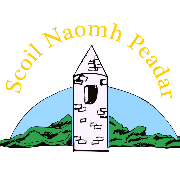Maths Number Activities for Infants and 1st Class
Counting Forwards
- Counting 1-20 (Infants)
- Counting 1-100 (1st and 2nd)
- Start counting from different points e.g. start at 6 and count on
- Try to work on crossing the “10 number” (10, 20, 30, 40 etc) when going forwards – e.g. say Start at 8 and keep going until I say stop. Stop the child around 13/14 if you want to see if they can cross from the 1s to the teens
- Same applies with bigger numbers – check if they can cross from the teens to the 20s, the 20s to the 30s etc – e.g. say Start at 18, stop at 25. Start at 22, stop at 33. Start at 37, stop at 52. Start at 76, stop at 93 and so on.
- Number after: What number comes after 11, after 15 etc. Include plenty of examples crossing the 10 e.g. What number comes after 19? 29? 39? etc. Try to get child to give the next number without having to count the whole the whole way up starting from the number one – that’s a really important skill.
Counting Backwards
- Counting backwards is very important for subtraction
- Try to start at all different numbers and see can the child cross over the 10, 20, 30, 40 etc. Start at 13, stop at 9. Start at 24, stop at 15. Start at 32, stop at 20 etc. There is no need to count all the way back to 1.
- Counting backwards is a lot harder for children (it’s like an adult trying to say the alphabet backwards!) so it takes longer to achieve fluency with it.
- Number before: What number comes before 8? Before 12? Before 20? Before 31? Again, work on the numbers around the tens. The child should give a quick reply, not counting out.
- Remember: Stay within your child’s instructional level – if they are struggling with the teens, don’t go on to the 20s, 30s etc
- If there is any before/after confusion, just do one at a time e.g. forwards counting and number after one day; backwards counting and number before the next day.
Numerals
- Written Numbers: Call out random numbers and ask your child to write them down – watch for the teens, they can be tricky! Start with 1-10, 11-20, 21-30 etc
- Identification: Show your child numbers in random order in range 1-10. Don’t move on to the next set of numbers (teens) until they know all 1-10 without hesitation. Continue with this then into teens, 20s, 30s etc.
- Number Sequences: Give a start number and ask the child to write a sequence of numbers from that e.g. Start at 15 and write the numbers to 25 in sequence etc. Repeat this activity many times as lots of children find the teens challenging.
- Number Patterns:
- Doubles Patterns 1 – 5: Say to child: Put your hands in front. Make two on your right hand. Make two on your left hand. Count to see how many you have altogether – one, two, three, four! Say after me: two and two makes four. This time, look at one hand and then the other hand while you say: two and two makes four.
- Repeat for three and three; four and four; five and five, one and one.
- When your child is confident with doubles in the range 1-5, move on to bigger doubles 6-10 (six and six; seven and seven etc)
- Doubles Plus One: Put your hands on your head. Show me two and two on your fingers. What does two and two make? Put up one more finger. What do you have now? What does two and three make?
- Repeat for three and four; four and five.
- Five Plus Patterns: Child puts hand out in front (fingers seen). Put your hands in front and make five on this hand and make one on the other hand. How many fingers have you raised altogether? Say after me: Five and one make six.
- Repeat for five and two; five and three; five and four; five and five.
- When your child is confident giving answers when they can see their fingers, ask them to work with their hands above their heads (bunny ears or fingers unseen).
- Whatever number you are focusing on in finger patterns, do the same with counters/little toys/anything you can find at home.
- Remember: Repetition is important – children need plenty of repetition. At first, children will raise fingers one at a time and then progress to throwing up all the fingers they need at the same time. Board games will give your child lots of opportunities to see the dice patterns and become familiar with them.
Partitions of 10 – also called Number Bonds
- Knowledge of the Partitions of 10 (the numbers that add together to make 10: (1+9, 2+8, 3+7, 4+6, 5+5) is a very important maths skill which provides the basis for lots of future work in Maths
- Children can learn the Partitions of 10 using their fingers: Put up your 10 fingers. Fold down 2. How many fingers are standing up? 8. How many are folded down? 2. So 8 and 2 make 10.
Some useful Maths websites…
www.mathplayground.com/math-games.html
https://home.oxfordowl.co.uk/maths/
https://www.topmarks.co.uk/maths-games/5-7-years/counting
https://toytheater.com/category/math-games/
